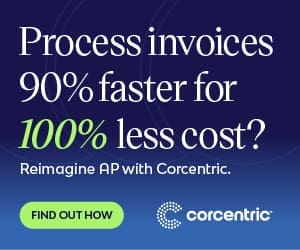Optimizing Order-To-Cash Software For Operational Performance Improvement

OTC PROCESS IMPROVEMENT TOOL
Order-to-cash (OTC) software applications are complex implements that require comprehensive integration for comprehensive optimization and performance. For the finance executive considering an OTC process improvement solution the de facto objective is to select one which can be swiftly implemented and increase operational efficiency.
The challenge that arises when looking for such software is to determine vendor who can meet the businesses financial requirements, technical specifications, and regulatory demands; all without disrupting existing processes. Selecting viable option must commence with the evaluation of traditional financial performance metrics, user-specific preferences, and the regulatory body’s restrictions.
The CFO must consider several important aspects in order to obtain an appropriate OTC software to meet businesses specific requirements. Foremost, they must evaluate customer service and sales (CS/S) process goals, customer relationship management (CRM), back office management (BOM), customer credit management (CCM), order fulfillment (OF), as well as accounts receivable/payable (AR/AP). All these components effect customer service, operating cash flow, and customer satisfaction in varying degrees. Additionally, there are several alternative OTC software formats available; including on-premises, hosted, cloud, and even legacy systems.
The most frequent challenge when selecting an OTC software is its cost and scalability associated with the existing customer service and financial management system. In order to reduce complexity and costs, CFO must determine if any specialized software is necessary to integrate various components of the current OTC processes, and if off-shelf options can be implemented efficiently. Moreover, the type of OTC industry which is primary to the enterprise must be considered when selecting the best-suited OTC software package.
Since most businesses reside in heavily regulated industry, compliance with industry specific statutes must be factored into the purchasing decision. In such instances, the OTC software should be able to process complicated financial calculations, meet audit istandards, and comply with regulatory requirements quickly and efficiently. Additionally, the system must be able to track and record customer-client related transactions to facilitate accurate reporting and projected long-term growth.
Finally, the finance executive must assess the proposed OTC software solution’s ability to handle large sets of customer records, enable customer service personnel to be proactive in their customer interactions, and ensure optimization of operational performance (e.g. reduced processing time, lowered costs). The chosen software should also offer real-time analytics as it relates to customer insights in order to enable effective decision-making.
In summary, selecting an OTC software solution requires an in-depth evaluation of several measures and considerations. From determining the financial and technical requirements to understanding the regulatory demands, comprehensive review must be completed in order to be able to achieve operational performance improvement goals and obtain an ideal fit within the organization.
The right solution and vendor selection can help save significant time and money in the long-term; while comprehensive integration and optimization will provide superior functionality.

